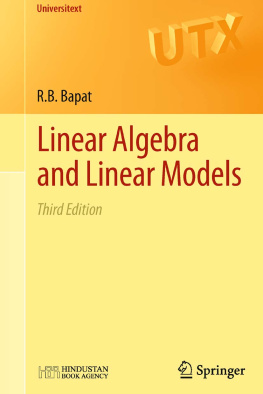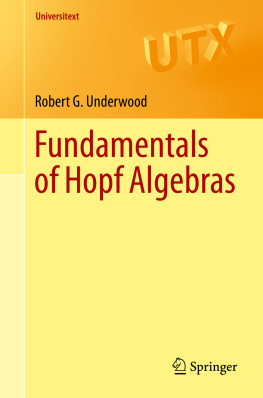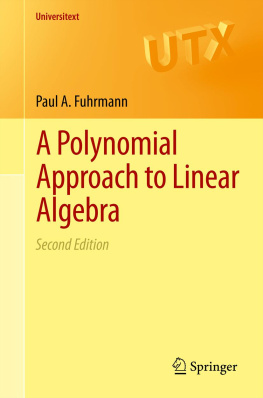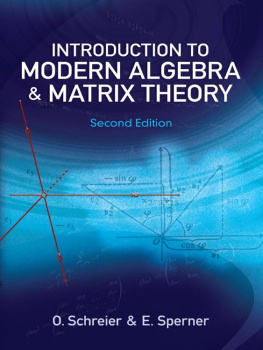1. About the Course, and These Notes
1.1 Aims and prerequisites
This course will develop some concepts and results which occur repeatedly throughout the various areas of algebra, and sometimes in other fields of mathematics, and which can provide valuable tools and perspectives to those working in these fields. There will be a strong emphasis on motivation through examples, and on instructive exercises.
I will assume only an elementary background in algebra, corresponding to an honors undergraduate algebra course or one semester of graduate algebra, plus a moderate level of mathematical sophistication. A student who has seen the concept of free group introduced, but isnt sure he or she thoroughly understood it would be in a fine position to begin. On the other hand, anyone conversant with fewer than three ways of proving the existence of free groups has something to learn from Chapters
As a general rule, we will pay attention to petty details when they first come up, but take them for granted later on. So students who find the beginning sections devoted too much to trivia should be patient!
In preparing this published version of my course notes, I have not removed remarks about homework, course procedures etc., addressed to students who take the course from me at Berkeley, which take up the next three and a half pages, since there are some nonstandard aspects to the way I run the course, which I thought would be of interest to others. Anyone else teaching from this text should, of course, let his or her students know which, if any, of these instructions apply to them. In any case, I hope readers elsewhere find these pages more amusing than annoying.
1.2 Approach
Since I took my first graduate course, it has seemed to me that there is something wrong with our method of teaching. Why, for an hour at a time, should an instructor write notes on a blackboard and students copy them into their notebooksoften too busy with the copying to pay attention to the contentwhen this work could be done just as well by a photocopying machine? If this is all that happens in the classroom, why not assign a text or distribute duplicated notes, and run most courses as reading courses?
One answer is that this is not all that happens in a classroom. Students ask questions about confusing points and the instructor answers them. Solutions to exercises are discussed. Sometimes a result is developed by the Socratic method through discussion with the class. Often an instructor gives motivation, or explains an idea in an intuitive fashion he or she would not put into a written text.
As for this last point, I think one should not be embarrassed to put motivation and intuitive discussion into a text, and I have included a great deal of both in these notes. In particular, I often first approach general results through very particular cases. The other itemsanswering questions, discussing solutions to exercises, etc.which seem to me to contain the essential human value of class contact, are what I would like classroom time to be spent on in this course, while these notes will replace the mechanical copying of notes from the board.
Such a system is not assured of success. Some students may be in the habit of learning material through the process of copying it, and may not get the same benefit by reading it. I advise such students to read these notes with a pad of paper in their hands, and try to anticipate details, work out examples, summarize essential points, etc., as they go. My approach also means that students need to read each days material before the class when it will be covered, which many students are not accustomed to doing.
1.3 A question a day
To help the system described above work effectively, I require every student taking this course to hand in, on each day of class, one question concerning the reading for that day. I strongly encourage you to get your question to me by e-mail by at least an hour before class. If you do, I will try to work the answer into what I say in class that day. If not, then hand it in at the start of class, and I will generally answer it by e-mail if I feel I did not cover the point in class.
The e-mail or sheet of paper with your question should begin with your name, the point in these notes that your question refers to, and the classifying word urgent, important, unimportant or pro forma. The first three choices of classifying word should be used to indicate how important it is to you to have the question answered; use the last one if there was nothing in the reading that you really felt needed clarification. In that case, your pro forma question should be one that some reader might be puzzled by; perhaps something that puzzled you at first, but that you then resolved. If you give a pro forma question, you must give the answer along with it!
You may ask more than one question; you may ask, in addition to your question on the current reading, questions relating to earlier readings, and you are encouraged to ask questions in class as well. But you must always submit in writing at least one question related to the reading assignment for the day.
1.4 Homework
These notes contain a large number of exercises. I would like you to hand in solutions to an average of one or two problems of medium difficulty per week, or a correspondingly smaller number of harder problems, or a larger number of easier problems. Choose problems that interest you. But please, look at all the exercises, and at least think about how you would approach them. They are interspersed through the text; you may prefer to think about some as you come to them, and to come back to others after you finish the section. We will discuss many of them in class. I recommend spending at least one to five minutes thinking about each exercise, unless you see a solution immediately.
Grades will be based largely on homework. The amount of homework suggested above, reasonably well done, will give an A. I will give partial credit for partial results, as long as you show you realize that they are partial. I would also welcome your bringing to the attention of the class interesting related problems that you think of, or find in other sources.
It should hardly need saying that a solution to a homework exercise in general requires a proof. If a problem asks you to find an object with a certain property, it is not sufficient to give a description and say, This is the desired object; you must prove that it has the property, unless this is completely obvious. If a problem asks whether a calculation can be done without a certain axiom, it is not enough to say, No, the axiom is used in the calculation; you must prove that no calculation not using that axiom can lead to the result in question. If a problem asks whether something is true in all cases, and the answer is no, then to establish this you must, in general, give a counterexample.
I am worried that the amount of handwaving (informal discussion) in these notes may lead some students to think handwaving is an acceptable substitute for proof. If you read these notes attentively, you will see that handwaving does not replace proofs. I use it to guide us to proofs, to communicate my understanding of what is behind some proofs, and at times to abbreviate a proof which is similar to one we have already seen; but in cases of the last sort there is a tacit challenge to you, to think through whether you can indeed fill in the steps. Homework is meant to develop and demonstrate your mastery of the material and methods, so it is not a place for you to follow this model by challenging the instructor to fill in steps!

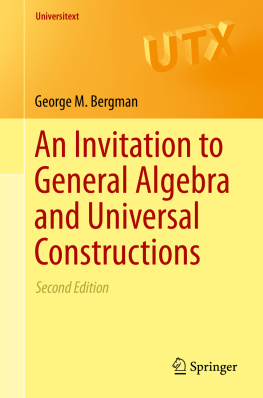
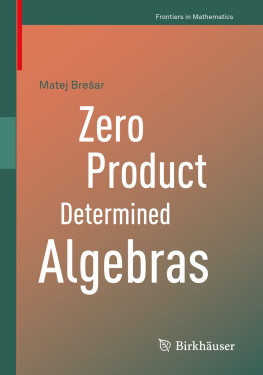
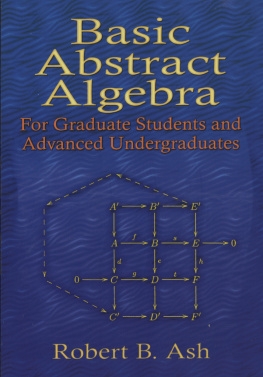

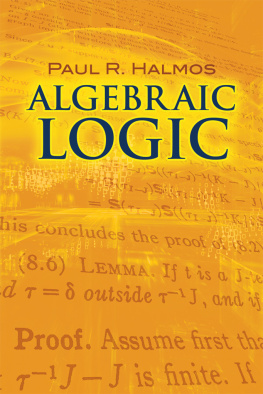
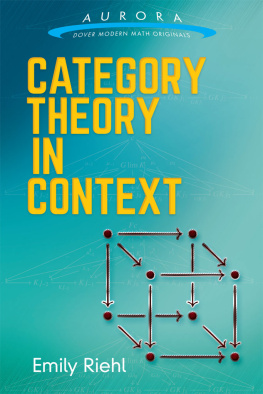
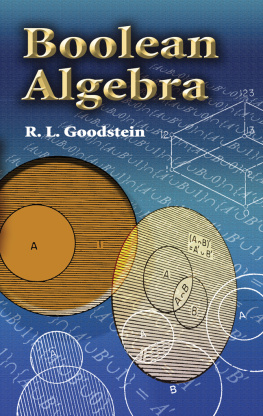
![Eisner Tanja - Operator Theoretic Aspects of Ergodic Theory [recurso electrónico] $c](/uploads/posts/book/173124/thumbs/eisner-tanja-operator-theoretic-aspects-of.jpg)

